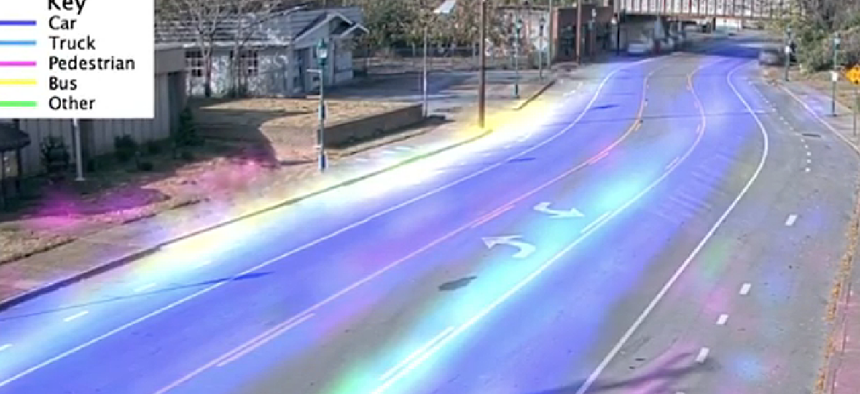Chattanooga plugs traffic testbed into fiber network


Connecting state and local government leaders
Always ready to take advantage of its gigabit fiber network, Chattanooga, Tenn., launched a Testbed Corridor to study pedestrian and vehicle traffic patterns along one of the city’s central areas.
Always ready to take advantage of its gigabit fiber network, Chattanooga, Tenn., launched a Testbed Corridor to study pedestrian and vehicle traffic patterns along one of the city’s central areas.
Cameras, LIDAR, radar, software-defined radios, wireless communications and air quality and audio sensors collect information from their spots on 11 poles along a 10-block section of Martin Luther King Boulevard in the city’s downtown. That data is analyzed and compared with several years’ worth of historic data -- a heat map of all the accidents in the city -- so researchers can predict where accidents are most likely to occur in the next six hours, based on day, time and weather conditions. The poles are connected to the city’s fiber, enabling the sensors to transmit the data in real time.
Although some of the sensors have edge computing capabilities, the bulk of the data analysis happens at the Center for Urban Informatics and Progress (CUIP) at the University of Tennessee at Chattanooga (UTC).
“We do a lot of computer vision in terms of object detection and object tracking for the video data,” said CUIP Director Mina Sartipi. The environmental sensors track factors such as humidity, temperature and dew point, and the center runs predictive analysis on the air quality data. It also classifies data from sirens so that if an audio sensor picks up a siren from an emergency response vehicle, the traffic and crosswalk signals can be adjusted in real time to "come up with the best route, for example, for ambulances or fire trucks,” she said. Currently, audio data focuses on sirens, but the center is working to detect gunshots, too.
“Really what we are using the testbed for is getting pieces of information" and bringing it together with other information that already existed, Sartipi said.
CUIP, which has been housing data since January, does not store video for longer than 30 minutes, but it does keep time-stamped information from the videos, such as the locations of cars, bikes and pedestrians on each frame. All of the data is stored onsite and backed up to the cloud.
Another project in the works uses blockchain to secure data transmitted on dedicated short-range, 5G and other wireless networks for vehicle-to-vehicle or vehicle-to-infrastructure communications. The receiving unit can validate the authenticity of the received messages using a blockchain database, and the testbed has edge processing units that processes and updates the blocks, according to the CUIP website.
The Testbed Corridor is part of a larger effort by the Chattanooga Smart Community Collaborative. CSCC is comprised of EPB -- the city-owned electric power distribution and telecommunications company that handles the fiber -- UTC, the city government, Hamilton County government and several other local organizations. CSCC partners can access data from the testbed in real time via application programming interfaces.
Chattanooga’s fiber-optic network, which provides 10-gigabit/sec speeds to all of the city’s 180,000 households and businesses, sets the city up for success when 5G is rolled out, said Jim Ingraham, vice president of strategic research at EPB. Communities that have fiber to the home will be able to backhaul 5G across the fiber, he said.
EPB has its hands in other smart initiatives, as well. For example, it is working with Oak Ridge National Laboratory to test how drones could create real-time images of vegetation around the electric system equipment and help reduce the utility company’s costs associated with cutting back overgrown trees and bushes. Eventually, EPB could use drones to assess storm damage and triage problems on the electric infrastructure to restore service faster, Ingraham said.
“Our public utility, our public hospital, our city and county government, and our state university are all collaborating together to find ways to do that, to build those next-generation infrastructures and services for the people that we serve,” Ingraham said.




